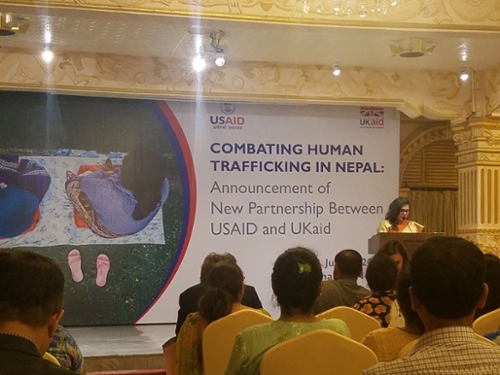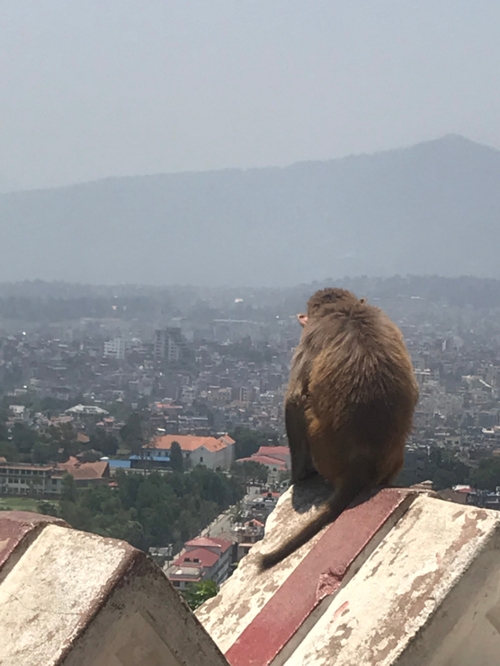Week 5: New Projects, Partnerships, and Places
Data & Districts
For the first month of my internship, most of my assignments involved analyzing the language in a specific piece of legislation, formulating recommendations that would bring Nepal’s counter trafficking in persons legislation into compliance with international best practice. When week five rolled around, I got the chance to step away from legislative research, at least for a few days.
Right now, Hamro Samman works in three provinces, targeting ten districts within those provinces. The type of work conducted within a certain district depends on whether it is a source, transit, or destination district. For example, if data suggests a large number of trafficking survivors originate from or transit through a certain district, then the focus needs to shift to prevention: What can we be doing to raise awareness within this certain population? In contrast, if a district is the end destination for the trafficking survivors, where the majority of the exploitation occurs, then the focus shifts to prosecution and protection: How can we ensure justice and provide better support services for these survivors?
To help the project achieve this objective, I spent much of the past week sorting through data recently collected from a group of trafficking survivors, specifically looking for any additional source districts. Once finished with sorting through the data, I turned to creating province profiles, quick overviews on some relevant counter trafficking in persons statistics to share with our partners. Although finding all of the information I need in English is still a challenge, I expect the project to equip me to make informed policy recommendations in the future.
New Partnerships
Most counter-trafficking in persons programs use a three P’s framework: prevention, protection, and prosecution. Hamro Samman is unique, introducing a fourth P: partnerships. Week five was the start of several exciting partnerships.
At the beginning of the week, the office hosted two separate signing ceremonies, with four organizations receiving their grants to strengthen support services available for trafficking survivors. Each organization operates a temporary shelter and offers immediate rehabilitative programs for trafficking survivors. In the NGO world, grants are often a slow process. For the Hamro Samman team, it was exciting to see the project move from the policy phase to actually implementing more resources for survivors. For the shelter directors, with some of them sacrificially operating out of their own personal funds, finally receiving substantial support was emotional.
At the government level, Hamro Samman celebrated another partnership. On Thursday, USAID and the United Kingdom’s Department for International Development (DFID) announced plans to join efforts to combat trafficking in Nepal. Up until this point, Hamro Samman’s support came solely through USAID, but DFID’s involvement was discussed before the project was ever implemented.
My Chief of Party graciously got me on the list for the signing ceremony at the last minute, and I listened to the USAID Mission Director and Head of DFID speak about their planned collaborative efforts. For the Hamro Samman team, this partnership means more expertise and resources to use in the fight against trafficking in persons.

Swayambhunath Stupa
Spending a summer in Nepal means I am in the midst of monsoon season. Since I arrived in Kathmandu, I have attempted to make it to Swayambhunath Stupa, also known as the Monkey Temple, nearly every weekend. However, every single time I prepared to leave for the temple, it would start raining. On Sunday, I finally made it to Swayambhunath.
Swayambhunath is one of the most sacred temples in the Buddhist religion, but many Hindus also come there to worship. The main temple is huge, perched at the top of 365 steep steps. There is a back entrance where taxis drop off tourists, but I asked my driver to drop me off at the bottom of the stairs, wanting the full experience. The climb was tiring, but all along the steps are colorful shrines and Buddha statutes, inscripted with ancient writings.
As I approached the top, I started to spot the famous holy monkeys that occupy the temple grounds. Before making it to Swayambhunath, my monkey sightings in the city were pretty rare. In contrast, hundreds of monkeys swarm the temple, and there are even booths set up for tourists to buy monkey food. Having read stories of monkeys stealing things from people and biting, I tried to limit my monkey interaction to some photos taken at a distance.
After making it to the main temple, I walked around the grounds and took in the view of Kathmandu Valley, the city contrasting with the looming mountains in the background. Wanting to maximize my time there, I wandered into a café near the main temple. My waiter seated me on the rooftop, giving me an amazing view of the whole Valley and the main temple. Soon after, my plans to stay away from the monkeys failed, as a few gradually made their way to the rooftop, eyeing my bottle of coke. When my waiter returned with my meal, he handed me a long pole. “To keep the monkeys away,” he said. I am happy to report I did not have to use the pole, though I may not be any less afraid of monkeys.

